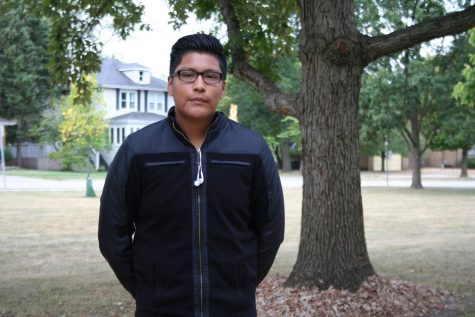Cross country runs 24-hour challenge
Event to raise funds to offset pay-to-participate
September 7, 2013
As the girls and boys cross country teams made their way to the track after school on Friday, August 30th, they knew they would be in for a long run. At 4PM, the first runners began to run. Their goal: run for the next 24 hours.
In order to combat the $200 pay to participate fee, and to raise money for other team functions, the cross country teams held a fundraiser to help students who couldn’t afford to pay. They decided they must take action after they saw a significant drop in participation. Two years ago, before the $200 pay to play fee, the boys cross country team ended the season with 44 runners. Last year there were only 21 runners on the team and this year there are 29 members. The teams have been planning this event for several weeks.
“I would hate for someone not to join cross country because they couldn’t afford it, so if we can do something to help them out, we’ll help them out,” said boys cross country coach Larry Forberg. “We’ve been trying to get the message out there that we’ll help you set up a payment plan; we’ll help you offset some of the costs. We’re trying to be creative, and trying to find a way to get as many people involved as we can.”
The 24-hour run was structured like a relay. Each participant set a goal for the number of miles they wanted to run. At least one member from both the girls and boys cross country team had to be running on the track for 24 hours straight. Each runner asked sponsors to donate money; local businesses also sponsored the runners.
“I don’t like selling candy. I have five children of my own and normally when they’re doing fundraisers, I end up buying most of the candy from them. We don’t want the teams to have to go out and sell food that, as runners, we wouldn’t eat ourselves because it’s unhealthy during the season,” said Forberg.
Cross country is not the only school activity facing dropping enrollment since the pay to participate fees were raised. Several other clubs and sports have been looking into fundraising ideas to benefit students who cannot afford to pay the fees. Chess team, for example, is especially concerned about their dropping enrollment. Though 21 students attended the team’s first meeting, sponsor David Monti worried that students not in the starting line-up for competitions would choose not to join the chess team.
“Last year, the first year of Pay to Participate, we had only ten kids regularly coming to chess, and those were the ten students that competed. By midseason, almost every kid that was not competing quit due to the Pay to Participate policy. Parents elected not to pay the $100 if their child was not competing,” said Monti in an email.
To encourage more students to get involved, Monti began looking into different fundraising ideas. For example, staff members and others in the community can sponsor chess players who are having financial difficulties.
Despite weather delays, the 24 hour challenge was ultimately successful. Many of the members met their goals. In addition to the financial benefit to the team, Forberg also saw the run as a way for the team to become closer and to get the community more involved.
“On our team goals, we always have create a community of runners, so that’s why not only can the runners participate, they can invite a friend to run with them, their parents can run with them, family members can run with them. So if we can get more people out to the track and everyone is doing this event, running together, it reinforces that running is an activity that you can do in high school or out of high school. It reinforces the idea of a community of runners,” said Forberg.


